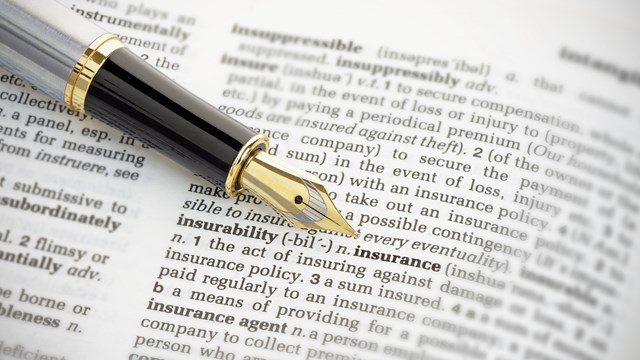
The fortunate fact is that most associations do not have claims on any regular basis. The consequence of this, however, is that many associations are not experienced in the claims process, and are prone to make mistakes, which can result in held-upor even denied claims.
Contrary to the belief of many insureds, most insurance companies do not sit back and try to figure out ways to deny claims. Insurance companies are in business to make money and if they do not have satisfied customers, they do not sell insurance.
In the interest of promoting successful claims that are paid promptly, I’ve compileda list of the most common mistakes made by community associations when submitting claims.
Notice
The number one identified mistake, which includes numerous issues, revolves around giving notice of a claim, occurrence or loss. The following are some of the key issues:
Forgetting to notify all carriers. Most associations have numerous components to their insurance program. Sometimes management or a broker does not place all carriers for the association on notice because they do not believe there is coverage, or they do not think that a certain policy mayin fact provide coverage.
Some prescribe to the philosophy of “shot gun” notice where all carriers – no matter how improbable the coverage –should be put on notice and let the carriers make the coverage decisions. Others opine that the submission should be somewhat more surgical. Tip: Knowledge of the insurance products and the selection of knowledgeable professionals go far to minimize this potential issue.
Not understanding pre-tender issue. As I am drafting this portion of the article, I received notice of a claim from a broker. In the notice, the broker indicates “that the insured would like to have its own counsel, because that counsel has been working on pre-suit issues involving the claim.” This in and of itself may raise issues as to why notice was not previously given. Were these “facts and circumstances” that an insured believes could reasonably give rise to a “claim”? One consequential issue that may arise is who is responsible for pre-tender attorney fees and costs (pre-tender costs are those run up before an insurance company is formally notifiedof a lawsuit in a “tender letter”).
It is always the association’s choice whether to allow its own counsel to handle a matter. Tip: Association counsel should be sure to advise an association of potentialissues with respect to certain pre-tender attorney fees and costs not being covered under the terms and conditions of the policy.
Not understanding notice and reporting requirements. Many community association representatives do not understand thereporting requirements under the various insurance policies and consequently may fail to satisfy them. Too many times a policy requires notice to the carrier of a potential claim, not just after a complaint is served. Boards/ management need to be familiar with the policy requirements. Tip: This condition and requirement of the policy should be understood when the policy is first delivered and not when the claim or other occurrence happens.
Failure to follow up. Although most of us brokers never make errors or forget things, it is prudent to follow up to make sure the insurance broker actually notified the insurance carrier. The board will ask management to put carriers on notice and management will telephone or email the insurance broker. A written response by the broker as well as making sure the carrier acknowledges the claim filing is important and can result in a declination if the board, management and/or the brokerdoes not do their job. This is not a time where ignorance is bliss. Tip: Although insurers need reasonable time to process a claim, it is not wise to sit back and make any assumptions that claims have been received.
Untimely reporting. The consequences of not submitting a matter in a timely manner has a number of potential negative consequences. Different states treat late notice differently, some requiring that a carrier be prejudiced. The timeliness issue also takes on different consequences depending on the type of loss or claim that is being contemplated. For example, “property” loss claims require active steps by insureds to “mitigate” damages and to prevent the exacerbation of a loss. This is particularly the case in water damage claims where the notorious and infamous “mold” issue, potentially lurks in any such claim.
Poor Communication
The failure to communicate, as my wife so often tells me, is the root of many problems. In the claim context, this failuretakes on many shapes and sizes.
• First, many associations approach the claim situation as an “adversarial” process and only provide that information they think the carrier needs to know, requiring the carrier to comeback multiple times with additional follow-up questions.
• Second, associations do not designatea single person to be the liaison for the association regarding a claim: “too many cooks in the kitchen.” Accordingly, there is inconsistent and incomplete information being provided.
• Third, associations hold back information thinking that it may have a negative impact on coverage. The reality is that what will be will be and that the association should err on the side of providing information and let the carrier determine what is or is not needed.
• Fourth, there is often a dropped ball when boards change or property management companies or employeeschange.
Weak Documentation
The failure to properly document a loss or to keep records of what has happened is a critical flaw in the resolution of many claims.
• The document process for associations must start far in advance of any claim. Associations often do not have any procedures or protocols for pre- or post-claim situations.
• Associations and managers often do not thoroughly record or memorializeclaim information or relevant facts and circumstances
• The key requirement of a claim representative is to document his or her file. The source of those documents is theinsureds. This is one of those situations where all the insureds need to do is put themselves in the place of the adjuster: would they write a check for something based on the information they have provided if it was coming out of their pocket?
• Although it may sound obvious, many associations and their agents or representatives fail to take pictures of damages and other physical evidence of a claim. This would also include videotaping of various situations if appropriate. We all know that “a picture tells a thousand words.” It is also imperative that the association document who took the pictures, when and who else was present at the time. For example, what is more telling: the statement that the building was damaged, or the picture showing the damage?
By following these guidelines and paying attention to details, condos will have the greatest chance of having their claim smoothly handled and paid in a reasonablyprompt manner.
And remember, if in doubt, pick up the phone and call your insurance agent!
Joel W. Meskin, Esq., CIRMS, is vice president of Community Association Products at McGowan & Company, Inc., in Fairview Park, Ohio.






Leave a Comment